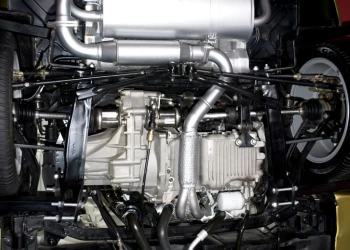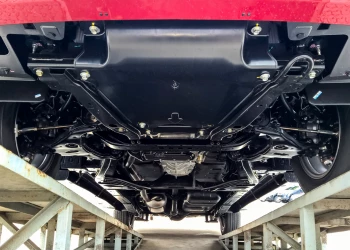Earlier this month Audi unveiled the TT Sportback Concept vehicle at the Paris Motor Show 2014. Billed as a speedy sports car with four seats and five doors, the Sportback concept was revealed alongside the new TT Roadster and TTS Roadster, which have been revamped for 2015. All three vehicles, when available, will benefit from Audi’s innovative ‘Virtual Cockpit’, which replaces the traditional gauges behind the steering wheel with a 12.3 inch digital display.
Image Credit: Audi
Virtual cockpit concept
While most manufacturers are developing larger, touch screens for the centre console, Audi has bypassed that step and moved the screen directly into the driver’s field of vision, replacing the conventional analogue dials with a high resolution LCD display.
The system is powered by a Tegra 30 graphics processor from Nvidia’s Tegra 3 series, which according to Audi, means that there is no lag or latency as the system updates or switches between screens. There are two display modes for drivers to choose from; a ‘classic’ view, where the speedometer and rev counter appear in the foreground, or an ‘infotainment’ view, where the virtual instruments are smaller and the space in-between can be used for other functions, such as the navigation system. The displays for outside temperature, mileage and time are permanently shown on the lower edge of the virtual cockpit screen, while conventional warning and information symbols are also presented as necessary.
Image Credit: Audi
The system can be controlled via a low centre console controller, by voice commands, or by using the buttons on the steering wheel. Sports models also come with Audi’s MMI (Multi-Media Interface) touch pad for fingertip data entry. The menu structure has been designed to mimic that of a smartphone, and also includes a full text search function. The left-hand steering wheel buttons allow a driver to toggle through menu options, while the right-hand buttons are for navigating through case-dependent choices.
Essentially, the system means that Audi can do away with many of the buttons usually associated with the centre console, and the MMI system has been reduced to just six buttons. Even the climate controls have been removed from the dashboard, with each circular vent having its own smaller display. The climate control is managed by twisting and pressing the vents to control various functions.
Further options and functionality will also be available with high-speed in-car internet, which can be accessed through the Technology Package in the options list of the Virtual Cockpit. The package includes a hard disk-based navigation mapping system which can fill the entirety of the 12.3 inch screen, and connection to the internet via a high-speed LTE connection. This enables a host of other features such as Google Maps, Google Street View, Audi traffic information online, price-graded refuelling locations in close proximity, the latest news and travel information, and social media.
The Virtual Cockpit interior concept was first unveiled as far back as January at the Consumer Electronics Show in Las Vegas, and Audi has moved quickly to bring it to production, with the new TT models expected to be available in spring 2015. It offers a glimpse into the future as Audi sees it, where the dashboard is free of clutter and distractions, and information and controls are firmly centred on the driver.
Autonomous lap at Hockenheim
In another piece of unrelated, but frankly quite exciting Audi news, the automaker has ‘raced’ an autonomous RS 7 concept vehicle around the Hockenheim circuit at a pace competitive with real racing. The unusual feat was undertaken at Germany’s Touring Car race finale on October 19th, to demonstrate the potential of Audi’s piloted driving autonomous systems.
Audi prepared for the stunt, which was broadcast live on Audi TV, with a series of tests on the track, which had confirmed in advance that the concept vehicle was capable of laps just over the 2 minute mark on the Grand Prix circuit, at top speeds of 149mph – approximately as quick and as fast as a professional racing driver.
One of the most extreme autonomous driving demonstrations yet, it does raise a very interesting, hypothetical question; will race cars of the future need a driver at all? In theory the future could see a competition where teams compete to produce the best driverless vehicle, where safety of the driver is a non-issue, speed can be increased, and the team with the best technology emerge victorious. But perhaps that’s a question for another day.
Sources:





















